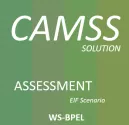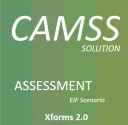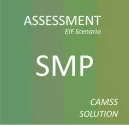Governance Interoperability Quick Assessment Toolkit
What is the solution about?
Governance Interoperability Quick Assessment Toolkit (GIQAT©) is a user-friendly online questionnaire, designed as a self-assessment tool to assist public service owners to evaluate the structural interoperability of digital public services.
GIQAT© has been developed in the context of Action 2016.36 Assessment of trans-European systems supporting EU policies of the Interoperability solutions and common frameworks for European public administrations, businesses and citizens (ISA2 programme).
The objective of the GIQAT© is to allows public service owners to evaluate the governance interoperability maturity level of their digital public service. GIQAT© which provides public administrations with insight into two key aspects of the governance interoperability of their digital public service:
- Collaboration Assurance: Is the extent that an open standard enables the collaboration assurance of a digital public service with another digital public service.
- Collaboration Control: Is the extent that an open standard enables the collaboration control of a digital public service with another digital public service.
The toolkit is fully compliant with all European Interoperability Framework (EIF) recommendations for the development and improvement of public services.
GIQAT© defines five levels of interoperability maturity:
- Ad hoc (level 1): Poor interoperability – the digital public service cannot be considered interoperable
- Opportunistic (level 2): Fair interoperability – the digital public service implements some elements of interoperability best practices
- Essential (level 3): Essential interoperability – the digital public service implements the essential best practices for interoperability
- Sustainable (level 4): Good interoperability – all relevant interoperability best practices are implemented by the digital public service
- Seamless (level 5): Interoperability leading practice – the digital public service is a leading interoperability practice example for others

What are the benefits of GIQAT©?
The expected benefits of GIQAT© are listed as follows:
- It spots areas for improving the interoperability in a given solution;
- It supports portfolio management decisions:
- by suggesting solutions that could be published in the European Interoperability Cartography (EIC);
- by clustering solutions with regard to interoperability maturity;
- by identifying solutions that should be improved in term of interoperability.
- It is applicable to any software solution supporting public services (not only for TES);
- It saves time and resources in interoperability peer-to-peer tests by acting as a gateway to it. If the result of the Interoperability quick assessment is below the suggested threshold then it is recommended not to invest further efforts in a full interoperability peer-to-peer test;
- It supports end users of the EIC in verifying the overall interoperability score of any published solution.
Based on the automatically computed Interoperability Assessment Score, the toolkit provides a five stage interoperability maturity level model for each of the aforementioned two interoperability areas. It indicates the potential interoperability maturity of a specific solution by providing a reference rate (from 0% to 100%), with clear recommendation on how to improve each area.
Building on this maturity level of the specific digital public service, the Solution Owner can activate technical improvements aimed at increasing the potential Governance interoperability of the digital public service.
Start your GIQAT© assessment!
The current version of GIQAT (GIQAT v2.2.0) is available at the EU survey portal: https://ec.europa.eu/eusurvey/runner/GIQAT_v_2_2_0.
Useful Material
Download GIQAT leaflet.





